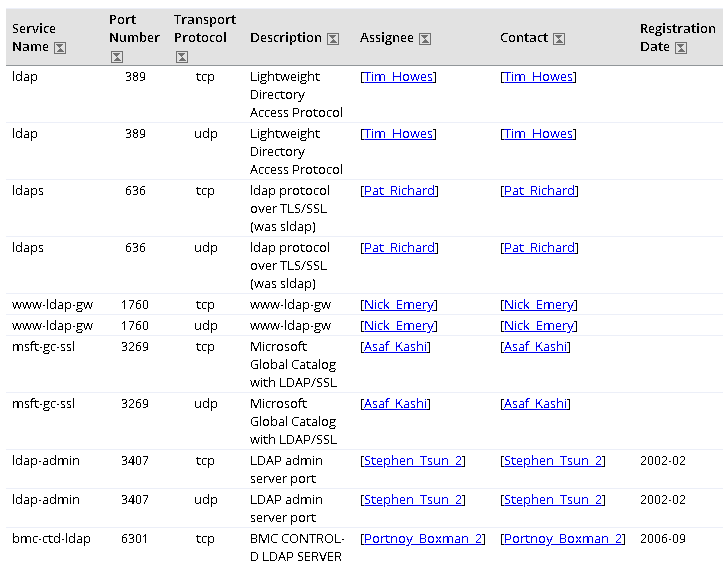Router 是一种流行的设备,用于将不同的网络连接在一起。从终端用户的角度来看,路由器是用来连接互联网的设备。 ADSL Modems , Dialup Modems , MetroEthernet Switch , 4G and 5G Modems 也被称为路由器,因为它们的路由功能和路由器一词的流行。
家庭中使用的路由器通常将局域网或局域网连接到因特网。局域网和因特网都使用IP地址进行通信和寻址。但局域网使用私有IP地址,如10.0.0.0/8、192.168.0.0/16和172.16.0.0等。 192.168.0.0 地址范围是最流行和最常用的私有地址范围。因此,您的调制解调器可能使用192.168.0.0/16范围内的IP地址。
默认情况下,路由器是家庭LAN网络的默认网关。默认网关是指访问局域网外部或互联网的默认点。为了管理路由器,我们应该访问路由器GUI,它通常是一个web页面。使用路由器的IP地址访问此网页。对于Windows、Linux、macosx、iOS、Android、ChromeOS,我们可以通过GUI或命令行以不同的方式和工具找到路由器的IP地址。
通过命令行在Windows中查找路由器IP地址
Windows操作系统您可以使用MS-DOS或PowerShell命令行来查找路由器IP地址。有不同的命令,但最基本的和已经提供的命令是 ipcionfig 命令。我们将通过键入打开MS-DOS或PowerShell终端 ms-dos 或 powershell 从下面的开始菜单。
![图片[1]-如何在Windows、Linux、MacOSX、Android、iOS、iPhone、ChromeOS操作系统上找到我的路由器IP地址?-yiteyi-C++库](https://www.yiteyi.com/wp-content/uploads/2020/03/poftut_image-64.png)
然后我们将键入 ipcionfig 命令如下。
![图片[2]-如何在Windows、Linux、MacOSX、Android、iOS、iPhone、ChromeOS操作系统上找到我的路由器IP地址?-yiteyi-C++库](https://www.yiteyi.com/wp-content/uploads/2020/03/poftut_image-65.png)
此命令将列出有关网络接口的信息。如果我们通过以太网或电缆连接,我们将寻找 Ethernet adapter 配置部分并找到 Default Gateway 提供路由器IP地址的线路。如果是无线连接,您需要查看 Wireless LAN adapter Wi-Fi 与下面相同的默认网关行的行或节。
![图片[3]-如何在Windows、Linux、MacOSX、Android、iOS、iPhone、ChromeOS操作系统上找到我的路由器IP地址?-yiteyi-C++库](https://www.yiteyi.com/wp-content/uploads/2020/03/poftut_image-66.png)
通过网络中心GUI在Windows中查找路由器IP地址
Windows操作系统还提供了通过GUI查找路由器IP地址的方法。我们可以使用 Network and Sharing 以列出有关网络适配器或网络接口卡的详细信息。首先,你要打开 Network Connections 屏幕通过 Control Panel -> Netowrk and Internet -> Network Connections 就像下面一样。
相关文章: 如何配置Cisco设备和用户模式
类型 control panel 如下图所示,打开列出的“控制面板”窗口。
![图片[4]-如何在Windows、Linux、MacOSX、Android、iOS、iPhone、ChromeOS操作系统上找到我的路由器IP地址?-yiteyi-C++库](https://www.yiteyi.com/wp-content/uploads/2020/03/poftut_image-67.png)
在下面的控制面板中,我们将单击 View network status and tasks 就像下面一样。
![图片[5]-如何在Windows、Linux、MacOSX、Android、iOS、iPhone、ChromeOS操作系统上找到我的路由器IP地址?-yiteyi-C++库](https://www.yiteyi.com/wp-content/uploads/2020/03/poftut_image-68.png)
在 Network and Sharing Center 将列出网络接口。在大多数情况下,将有一个单一的项目,这是你的互联网连接到路由器。在下面的示例中,连接是以太网类型,我们将单击 Ethernet0 .
![图片[6]-如何在Windows、Linux、MacOSX、Android、iOS、iPhone、ChromeOS操作系统上找到我的路由器IP地址?-yiteyi-C++库](https://www.yiteyi.com/wp-content/uploads/2020/03/poftut_image-69.png)
这个 Ethernet0 Status 窗口显示如下。我们将点击 Details 它将显示以太网连接详细信息,其中还包含默认网关信息或路由器IP地址。
![图片[7]-如何在Windows、Linux、MacOSX、Android、iOS、iPhone、ChromeOS操作系统上找到我的路由器IP地址?-yiteyi-C++库](https://www.yiteyi.com/wp-content/uploads/2020/03/poftut_image-70.png)
在 Network Connection Details 从窗户你可以看到 IPv4 Default Gateway 线路提供您的路由器IP地址 192.168.142.2 在这种情况下。
![图片[8]-如何在Windows、Linux、MacOSX、Android、iOS、iPhone、ChromeOS操作系统上找到我的路由器IP地址?-yiteyi-C++库](https://www.yiteyi.com/wp-content/uploads/2020/03/poftut_image-71.png)
通过命令行在Linux中查找路由器IP地址
如果您使用的是像Ubuntu、Debian、Fedora、Mint、CentOS、RHEL、SUSE这样的Linux发行版,那么您可以使用 ip route 命令。我们将使用以下不需要root权限的命令。
$ ip route
![图片[9]-如何在Windows、Linux、MacOSX、Android、iOS、iPhone、ChromeOS操作系统上找到我的路由器IP地址?-yiteyi-C++库](https://www.yiteyi.com/wp-content/uploads/2020/03/poftut_image-72.png)
您的路由器IP地址将与文本一起列在第一行 default via . 这是默认的网关地址,即您的路由器IP地址。
通过网络中心GUI在Linux中查找路由器IP地址
Linux桌面环境为用户提供了GUI。我们也可以使用这个GUI来找到路由器的IP地址。通常,桌面的右上角会提供一些网络图标,如下所示。在这个例子中,我们使用的是Ubuntu-Gnome桌面。我们将点击 Wired Settings 因为连接是以太网。如果是无线连接,则选择 Wireless Settings .
![图片[10]-如何在Windows、Linux、MacOSX、Android、iOS、iPhone、ChromeOS操作系统上找到我的路由器IP地址?-yiteyi-C++库](https://www.yiteyi.com/wp-content/uploads/2020/03/poftut_image-73.png)
网络设置屏幕如下所示。我们将单击网络适配器连接左侧的配置图标。
![图片[11]-如何在Windows、Linux、MacOSX、Android、iOS、iPhone、ChromeOS操作系统上找到我的路由器IP地址?-yiteyi-C++库](https://www.yiteyi.com/wp-content/uploads/2020/03/poftut_image-74.png)
以下 Wired 屏幕提供有关网络连接的一些信息。您的路由器IP地址列为 Default Route 就像下面一样。
![图片[12]-如何在Windows、Linux、MacOSX、Android、iOS、iPhone、ChromeOS操作系统上找到我的路由器IP地址?-yiteyi-C++库](https://www.yiteyi.com/wp-content/uploads/2020/03/poftut_image-75.png)
通过命令行在MacOS X中查找路由器IP地址
macosx提供了一个名为 Terminal 为它的用户。你可以用它来学习你的路由器IP地址。我们将从右上角的搜索框中键入 Terminal . 那我们就下达命令 route get default 到下面的终端。
$ route get default
![图片[13]-如何在Windows、Linux、MacOSX、Android、iOS、iPhone、ChromeOS操作系统上找到我的路由器IP地址?-yiteyi-C++库](https://www.yiteyi.com/wp-content/uploads/2020/03/poftut_image-76.png)
通过网络中心GUI在MacOS X中查找路由器IP地址
macosx还提供GUI工具来获取路由器的IP地址。为了获得默认网关地址,您将打开 TCP/IP configuration 按照以下步骤操作网络接口卡。首先,打开 System Preferences 窗口并单击 Network 配置如下。
![图片[14]-如何在Windows、Linux、MacOSX、Android、iOS、iPhone、ChromeOS操作系统上找到我的路由器IP地址?-yiteyi-C++库](https://www.yiteyi.com/wp-content/uploads/2020/03/poftut_image-77.png)
在 Network 控制面板,您将单击 Advanced 右边底部的按钮。
![图片[15]-如何在Windows、Linux、MacOSX、Android、iOS、iPhone、ChromeOS操作系统上找到我的路由器IP地址?-yiteyi-C++库](https://www.yiteyi.com/wp-content/uploads/2020/03/poftut_image-78.png)
在Wi-Fi设置屏幕中,打开 TCP/IP 标签如下。这个 Router 行提供路由器或默认网关的IP地址。
![图片[16]-如何在Windows、Linux、MacOSX、Android、iOS、iPhone、ChromeOS操作系统上找到我的路由器IP地址?-yiteyi-C++库](https://www.yiteyi.com/wp-content/uploads/2020/03/poftut_image-79.png)
在iPhone或iOS中查找路由器IP地址
在 iPhone 或 iPad 他们两个都使用 iOS 操作系统您的路由器IP地址可以从 Settings -> Wi-Fi . 此页将提供 Router 这是你的路由器IP地址。
![图片[17]-如何在Windows、Linux、MacOSX、Android、iOS、iPhone、ChromeOS操作系统上找到我的路由器IP地址?-yiteyi-C++库](https://www.yiteyi.com/wp-content/uploads/2020/03/poftut_image-80.png)
在Android中查找路由器IP地址
旧版本的android操作系统可能无法直接提供路由器或默认网关信息。在这种情况下,您应该安装第三方应用程序,它将提供详细信息。
相关文章: 网络无类域间路由(CIDR)备忘单
最新的Android操作系统提供了网络信息以及默认的网关和路由器IP地址。遵循以下步骤: Android Configuration -> Network & Internet -> Wi-Fi -> The SSID or Wireless Connection Name -> Advanced .
![图片[18]-如何在Windows、Linux、MacOSX、Android、iOS、iPhone、ChromeOS操作系统上找到我的路由器IP地址?-yiteyi-C++库](https://www.yiteyi.com/wp-content/uploads/2020/03/poftut_image-81.png)
下面您可以看到您的路由器IP地址列为 Gateway 哪个是 192.168.1.1
![图片[19]-如何在Windows、Linux、MacOSX、Android、iOS、iPhone、ChromeOS操作系统上找到我的路由器IP地址?-yiteyi-C++库](https://www.yiteyi.com/wp-content/uploads/2020/03/poftut_image-82.png)
在ChromeOS中查找路由器IP地址
ChromeOS是一个Google Chromebook操作系统,它使用云服务与之协作。我们可以在chrome笔记本上通过 Network 设置页 Gateway 像下面这样的线条。
![图片[20]-如何在Windows、Linux、MacOSX、Android、iOS、iPhone、ChromeOS操作系统上找到我的路由器IP地址?-yiteyi-C++库](https://www.yiteyi.com/wp-content/uploads/2020/03/poftut_image-83.png)
最常见路由器IP地址列表
路由器可以使用任何私有IP地址,但通常使用公共路由器IP地址。以下是路由器通常使用的IP地址。
- 192.168.1.1
- 192.168.0.1
- 192.168.1.254
- 192.168.1.254
- 192.168.31.1
- 192.168.2.1
- 192.168.10.1
- 192.168.11.1
- 192.168.88.1
- 192.168.123.254
- 192.168.254.254
- 192.168.2.10
- 192.168.1.250
- 192.168.20.1
- 192.168.111.10
- 169.254.128.132


![关于”PostgreSQL错误:关系[表]不存在“问题的原因和解决方案-yiteyi-C++库](https://www.yiteyi.com/wp-content/themes/zibll/img/thumbnail.svg)




